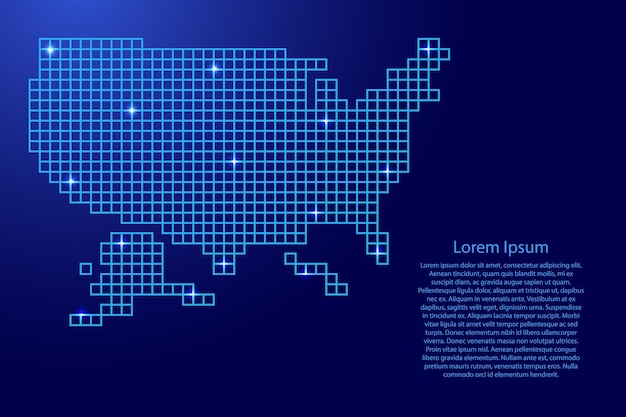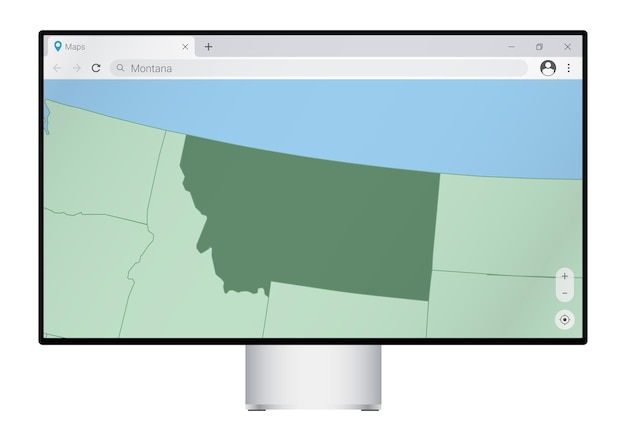Gerrymandering’s Impact: How Technology Can Ensure Fair Representation

Analyzing the impact of gerrymandering on fair representation highlights how manipulating electoral district boundaries can undermine democracy, and explores whether technology offers solutions by creating unbiased maps and enhancing transparency in the redistricting process.
Analyzing the impact of gerrymandering on fair representation: Can technology help solve the problem? Gerrymandering, the practice of drawing electoral district boundaries to favor one party or group, has long plagued the US political landscape. But can technology offer a solution to this deeply entrenched problem?
Understanding the Gerrymandering Problem
Gerrymandering isn’t just a historical quirk; it’s a persistent issue that affects the fairness and competitiveness of elections. By manipulating district lines, politicians can effectively choose their voters, rather than voters choosing them.
This section delves into the history and negative consequences of gerrymandering, setting the stage for understanding how technology can potentially mitigate its impact. We’ll explore the various strategies used in gerrymandering and how they distort the democratic process.
A Brief History of Gerrymandering
The term “gerrymandering” originated in 1812 when Massachusetts Governor Elbridge Gerry approved a redistricting plan that created a district resembling a salamander. This early example set the stage for centuries of partisan map-drawing.
Negative Consequences of Gerrymandering
Gerrymandering has multiple negative effects, including reduced electoral competition, decreased voter turnout, and increased political polarization. When districts are drawn to favor one party, the opposing party’s voters are effectively disenfranchised.

In conclusion, gerrymandering is a complex issue with deep historical roots and significant negative consequences for democratic representation. Understanding these problems is crucial for exploring potential technological solutions.
How Gerrymandering Works: Techniques and Tactics
Gerrymandering isn’t just about drawing lines; it involves sophisticated techniques aimed at maximizing one party’s advantage. Two primary tactics, “packing” and “cracking,” are frequently used to manipulate electoral maps.
This section examines these techniques in detail, illustrating how they work and the impact they have on different communities. We’ll look at examples from various states to demonstrate the widespread nature of these practices.
- Packing: Concentrates the opposing party’s voters into a small number of districts, minimizing their influence in other districts.
- Cracking: Spreads the opposing party’s voters across multiple districts to dilute their voting power.
- Stacking: Integrates areas of different demographics with the goal to dilute a minority group’s vote
By understanding the nuances of these techniques, we can better appreciate the challenges involved in creating fair and impartial electoral maps, and see how technology can provide solutions.
The Promise of Technology: Can Algorithms Draw Fairer Maps?
Technology offers a potential solution to gerrymandering by providing tools for creating objective, data-driven electoral maps. Algorithms can be designed to prioritize compactness, contiguity, and respect for existing communities.
This section explores how algorithms can be used to draw maps that are less susceptible to political manipulation. We’ll examine various approaches and discuss the strengths and limitations of each.
Algorithms for Impartial Redistricting
Researchers have developed algorithms that generate thousands of potential maps based on neutral criteria. These algorithms can produce a set of maps that are fair and representative, free from partisan bias.
Tools for Visualizing and Analyzing Maps
Software tools can help citizens and policymakers visualize and analyze the impact of different maps. These tools can reveal potential biases and help identify districts that are unfairly drawn.

In conclusion, technology provides powerful tools for creating fairer electoral maps. By leveraging algorithms and visualization software, we can reduce the influence of partisan politics in the redistricting process and promote more equitable representation.
Challenges and Limitations of Technological Solutions
While technology offers great promise, it’s not a panacea. There are challenges and limitations that must be addressed to ensure that technological solutions are effective and equitable. One of the challenges is defining what is meant by “fair.”
This section discusses these challenges, including the risk of algorithmic bias, the difficulty of defining fairness, and the need for transparency and accountability. A discussion on the need for human oversight will also be reviewed.
- Algorithmic Bias: Algorithms can reflect the biases of their creators. It’s crucial to ensure that algorithms used for redistricting are free from bias.
- Defining Fairness: Defining what constitutes a “fair” map is subjective and depends on various factors, including compactness, contiguity, and respect for communities of interest.
- Transparency and Accountability: It’s essential to have transparency in the redistricting process and to hold those responsible for drawing maps accountable for their decisions.
Addressing these challenges will require a multi-faceted approach that combines technological innovation with robust oversight and public engagement. This approach can ensure technology serves democracy and promotes more equitable representation.
Examples of Technology in Action: Successes and Failures
Several states and localities have experimented with using technology to improve the redistricting process. These experiences offer valuable insights into the potential and limitations of technological solutions.
This section examines case studies of successful and unsuccessful implementations of technology in redistricting. By learning from these examples, we can develop best practices and avoid common pitfalls.
Success Stories
Some states have successfully used technology to create fairer maps. For instance, some independent commissions have utilized algorithms to draw maps and achieve bipartisan consensus.
Lessons Learned
Technology alone cannot solve the problem of gerrymandering. It must be combined with clear guidelines, strong oversight, and public engagement to be effective, which has been a challenge, along with adoption.
By learning from past experiences, we can harness the power of technology to create more equitable and representative electoral maps.
The Future of Redistricting: A Hybrid Approach
The most promising approach to redistricting combines technology with human oversight. This hybrid model leverages the strengths of both to create maps that are both data-driven and responsive to community needs.
This section outlines the key elements of a hybrid approach and discusses how it can be implemented effectively. It’s important to have clear and practical steps towards moving forward from the current standard.
Key Elements of a Hybrid Approach
A hybrid approach should include clear guidelines for map-drawing, independent commissions with diverse membership, and robust public engagement.
Moving Forward
The future of redistricting lies in embracing technological innovation while preserving the core principles of democracy. By adopting a hybrid approach, we can create electoral maps that are fair, representative, and accountable.
| Key Point | Brief Description |
|---|---|
| 🗳️ Gerrymandering | Drawing district lines to favor one party, undermining fair representation. |
| 🤖 Technology | Algorithms can create unbiased maps, enhancing fairness and transparency. |
| ⚖️ Algorithmic Bias | Tech solutions face challenges like algorithmic bias and defining fairness. |
| 🤝 Hybrid Approach | Combining tech with human oversight ensures data-driven, community-responsive maps. |
Frequently Asked Questions
▼
Gerrymandering is the practice of drawing electoral district boundaries to favor one political party or group over another, thereby manipulating election outcomes and diminishing fair representation.
▼
Gerrymandering can disenfranchise voters by diluting their voting power, reducing electoral competition, and creating districts that are not truly representative of the community’s interests.
▼
Technology offers promising tools for creating objective maps by minimizing partisan bias. However, technology alone is not a complete solution and must be combined with human oversight.
▼
Algorithmic bias occurs when algorithms used for redistricting reflect the biases of their creators, resulting in maps that favor certain political demographics, even if unintentional.
▼
A hybrid approach combines the use of technology, such as algorithms for map-drawing, with human oversight and independent commissions to ensure fairness and community representation within redistricting.
Conclusion
In conclusion, while analyzing the impact of gerrymandering on fair representation: Can technology help solve the problem?, technology offers a hopeful path forward, it is clear that a balanced and well-governed approach, incorporating both human and technological elements, will be essential in securing fair and equitable electoral maps for the future.
